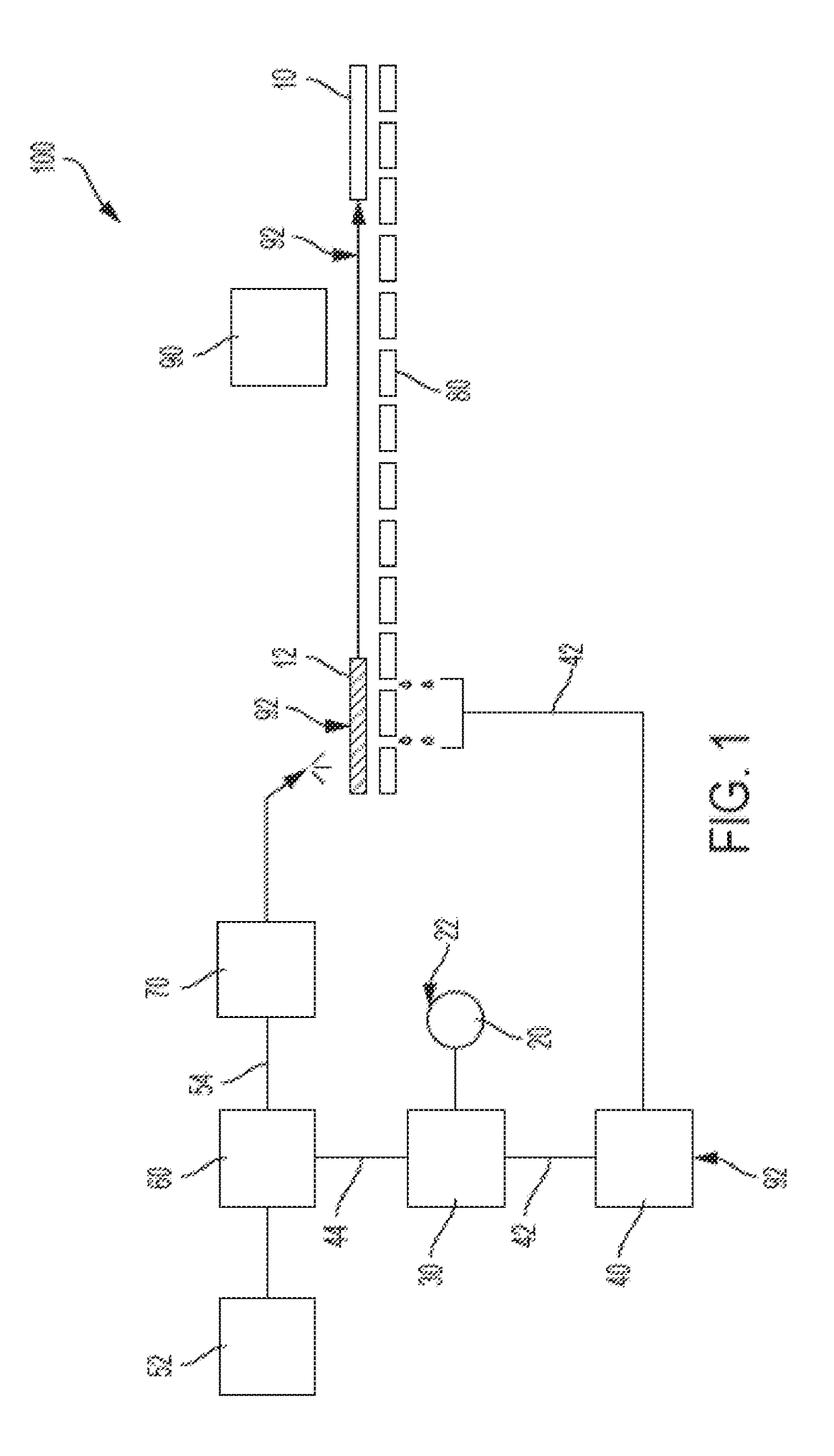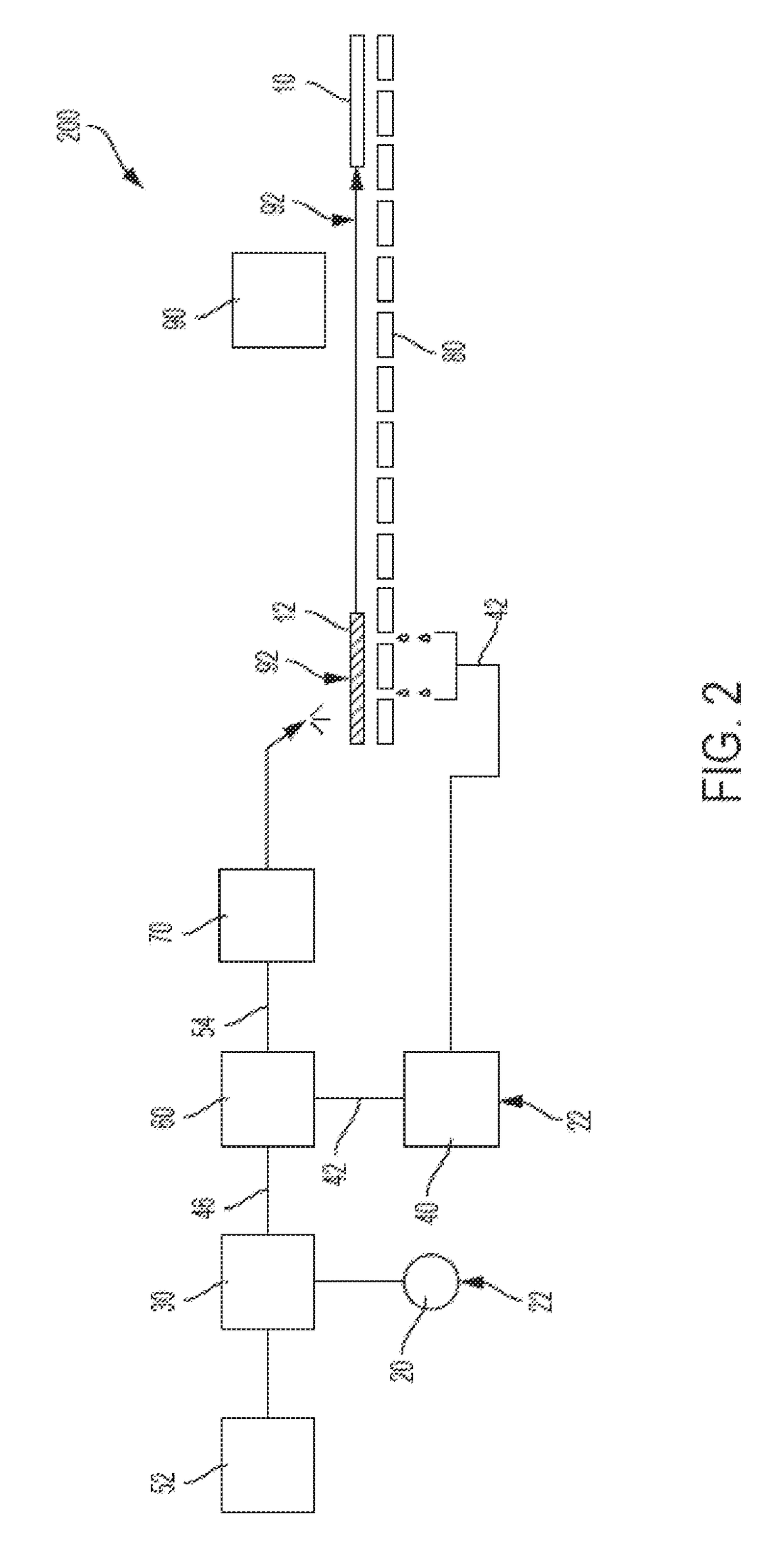Dissolved air de-bonding of a tissue sheet
a tissue paper and air-dissolving technology, applied in papermaking, non-fibrous pulp addition, foam addition, etc., can solve the problems of reducing tensile strength, reducing tensile strength, and requiring a higher energy cost to thermally remove the high level of water in the unpressed sh
- Summary
- Abstract
- Description
- Claims
- Application Information
AI Technical Summary
Benefits of technology
Problems solved by technology
Method used
Image
Examples
examples 1-4
[0108]In Examples 1-4, tissue papers were prepared with secondary, recycled fibers. The sheets were pressed per standard TAPPI procedure, placed in restraining rings, and air-dried overnight.
[0109]In Example 1, control tissue papers were prepared without compressed air using the sheet preparation procedure TAPPI T-205 and a standard sheet forming machine.
[0110]In Example 2, air-impregnated water was mixed with a fiber slurry to form a dilute air-impregnated fiber slurry. The air-impregnated water was prepared by adding 6 liters of water to an 8 liter stainless steel tank equipped with a hand air pump and a pressure gauge. The tank was sealed, air was pumped into the tank to a target pressure of 30 psig, and the tank was placed on a mechanical agitator for 8 minutes at approximately 2 cycles per second. The tank was removed from the agitator, opened to relieve pressure, and the 6 liters of air-impregnated water was added to the sheet machine or paper mould. The fiber slurry was combi...
examples 5-6
[0120]In Examples 5-6, tissue papers were prepared with secondary, recycled fibers. The tissue sheets were formed on a forming wire using the laboratory through air drying simulation procedure. Then the sheets were dried on the forming wire under a vacuum.
[0121]In Example 5, control tissue sheets were prepared as described above for Example 1. The control sheets were prepared using TAD simulation without the addition of air. Tissue sheets in Example 6 were prepared using the fiber slurry supersaturated with air at 30 PSI, as in Example 4.
[0122]Table 2 provides the basis weight, caliper, CD and MD tensile strength, CD and MD stretch, CD and MD TEA, Porofil (void volume), and air flow of the tissue sheets prepared in Examples 5 (control) and 6 (30 PSI). As shown, tissue sheets prepared with dissolved air had decreased tensile strength and increased caliper, compared to control tissue sheets. Further, the increased porofil (void volume) and air flow, compared to the control tissue shee...
PUM
| Property | Measurement | Unit |
|---|---|---|
| Weight | aaaaa | aaaaa |
| Weight | aaaaa | aaaaa |
| Fraction | aaaaa | aaaaa |
Abstract
Description
Claims
Application Information
 Login to View More
Login to View More - R&D
- Intellectual Property
- Life Sciences
- Materials
- Tech Scout
- Unparalleled Data Quality
- Higher Quality Content
- 60% Fewer Hallucinations
Browse by: Latest US Patents, China's latest patents, Technical Efficacy Thesaurus, Application Domain, Technology Topic, Popular Technical Reports.
© 2025 PatSnap. All rights reserved.Legal|Privacy policy|Modern Slavery Act Transparency Statement|Sitemap|About US| Contact US: help@patsnap.com



